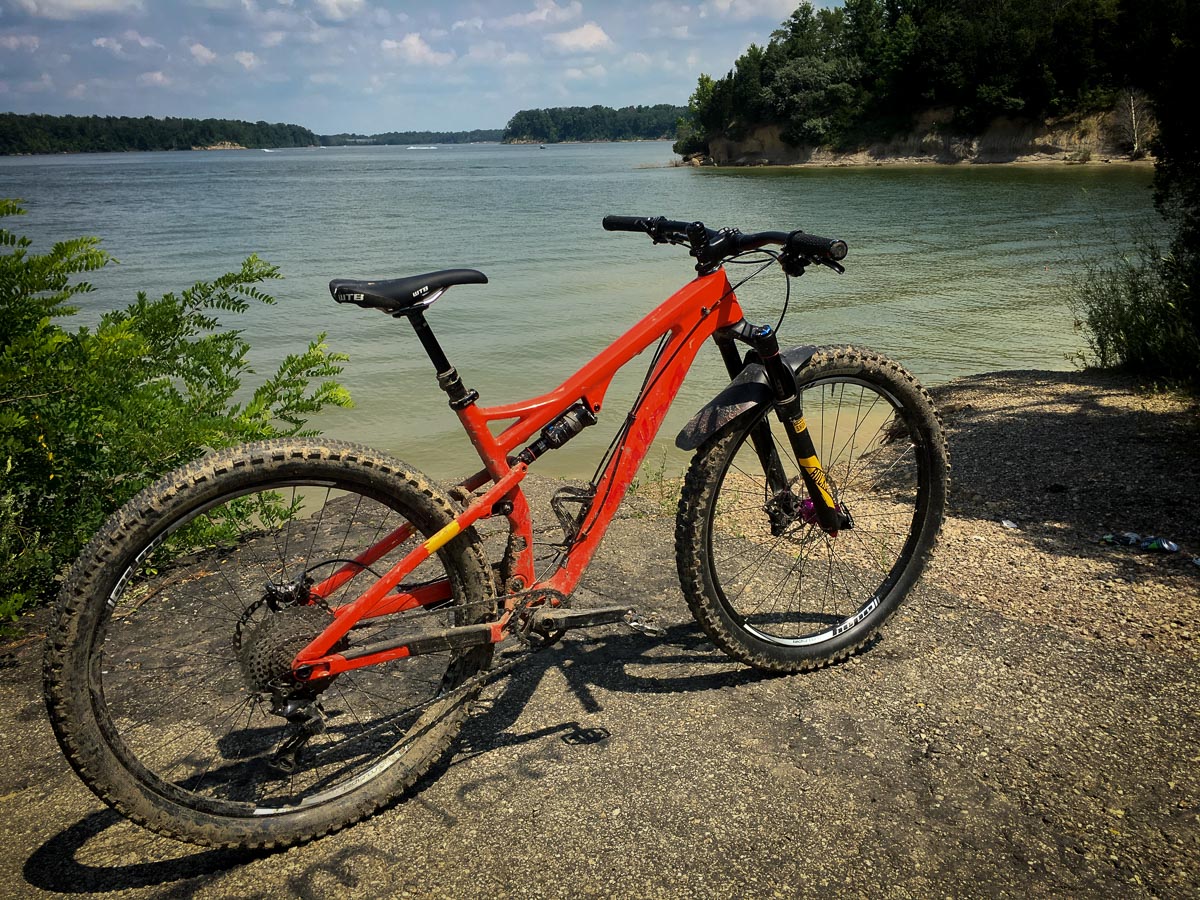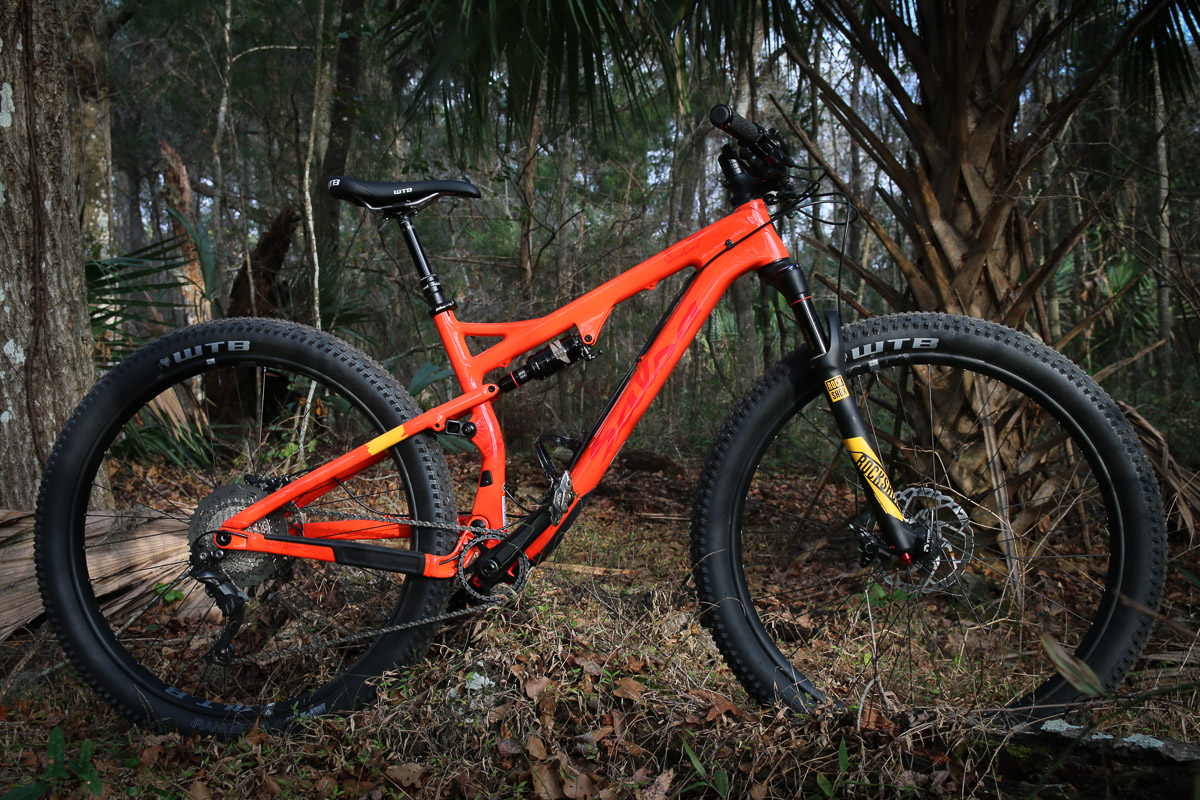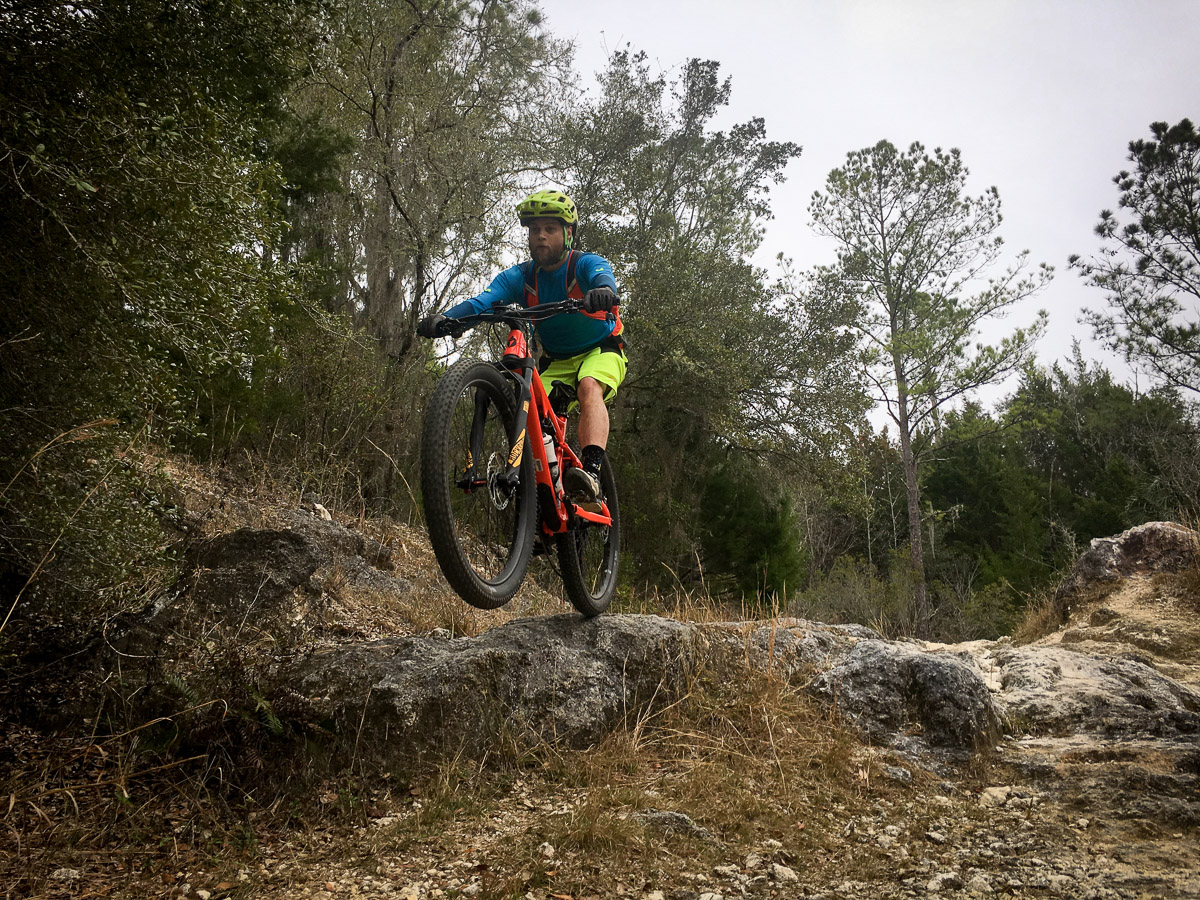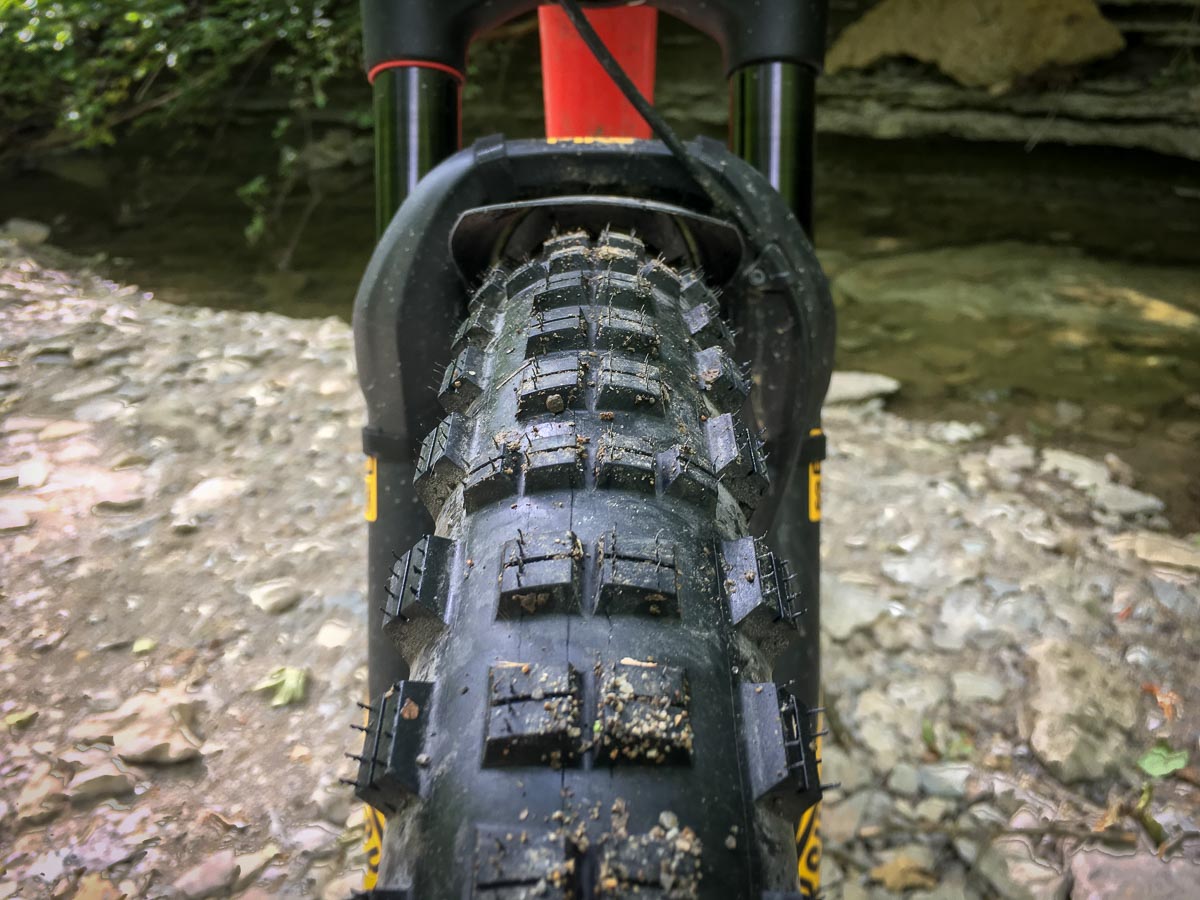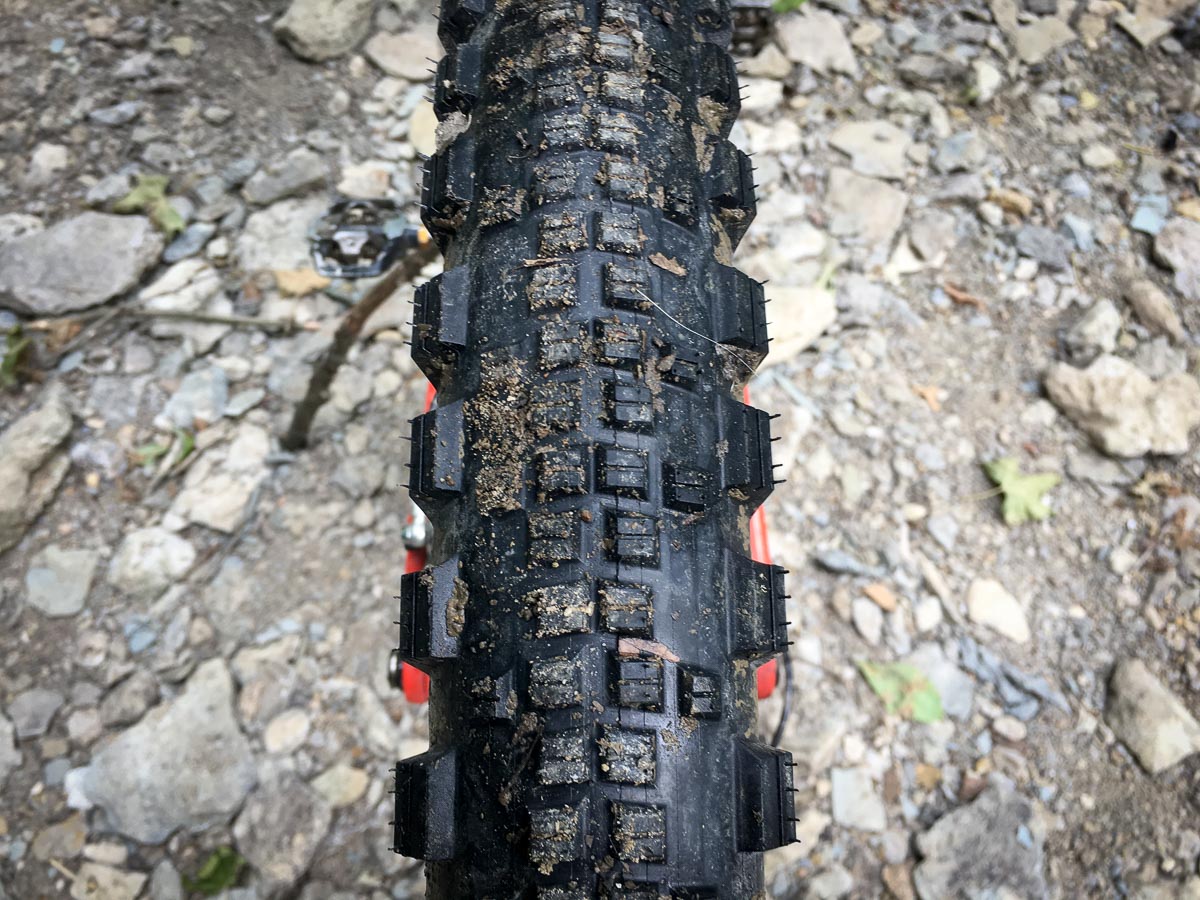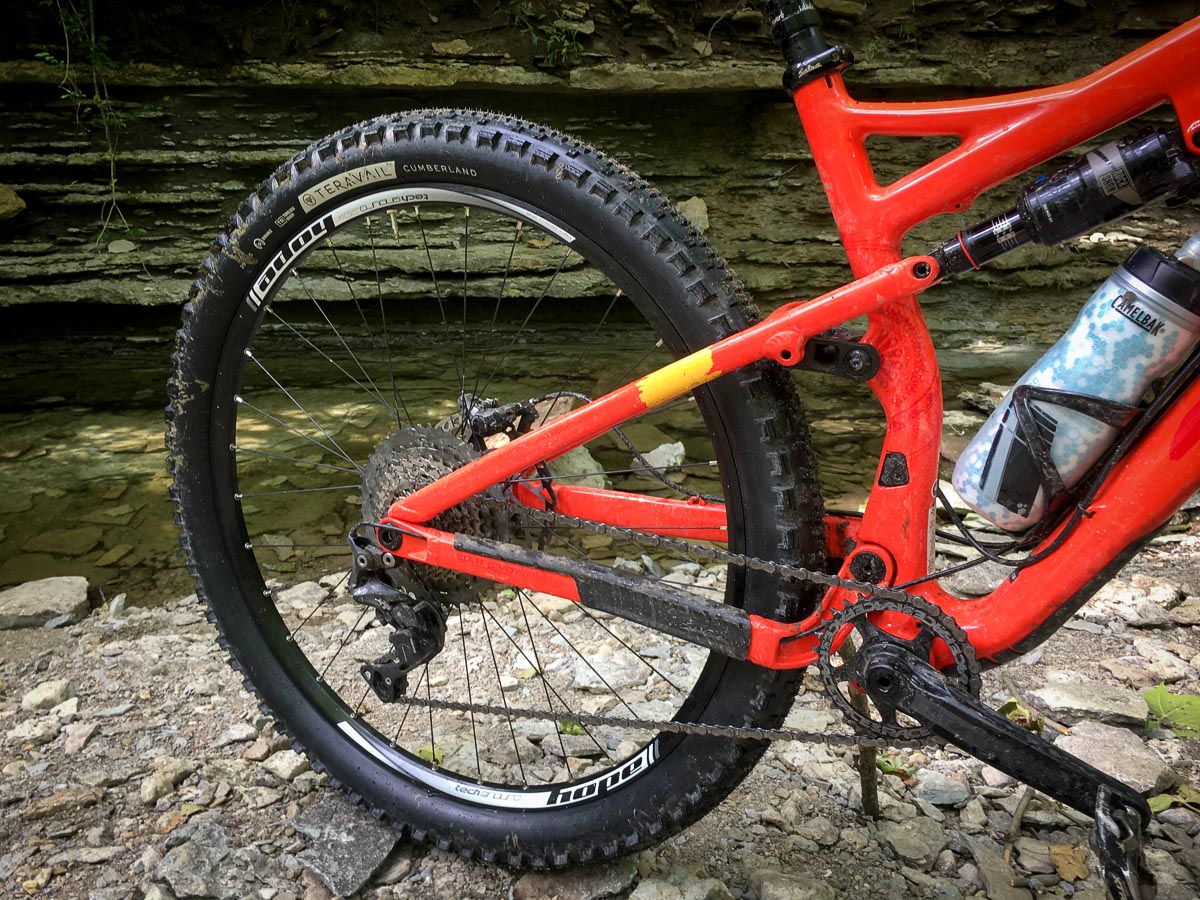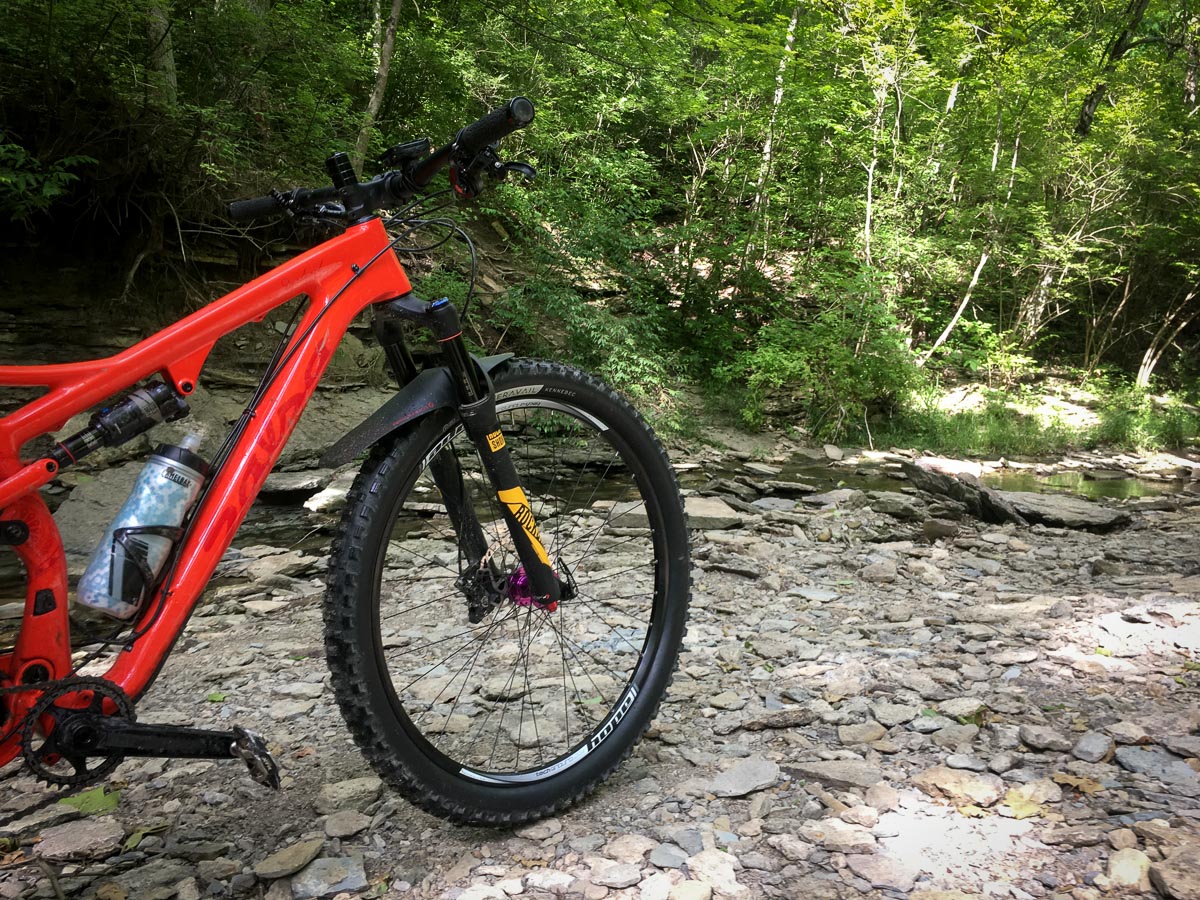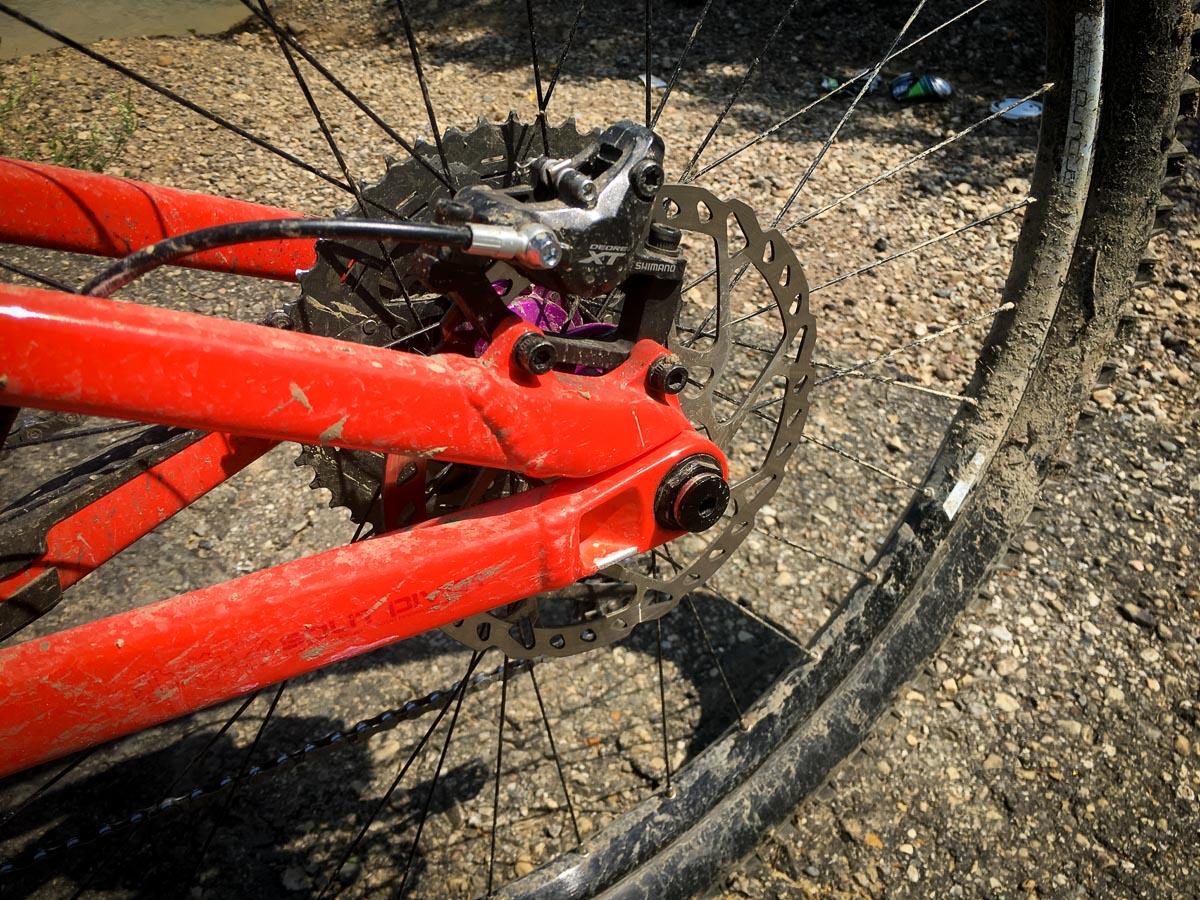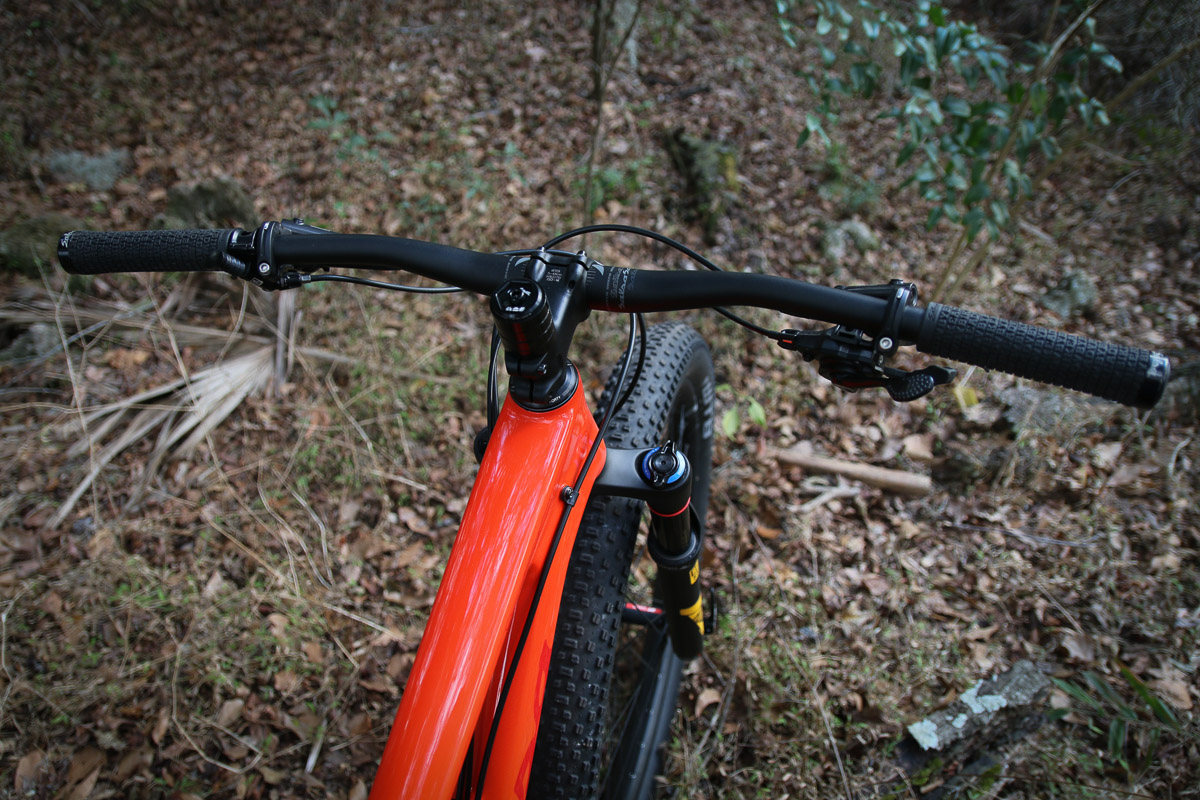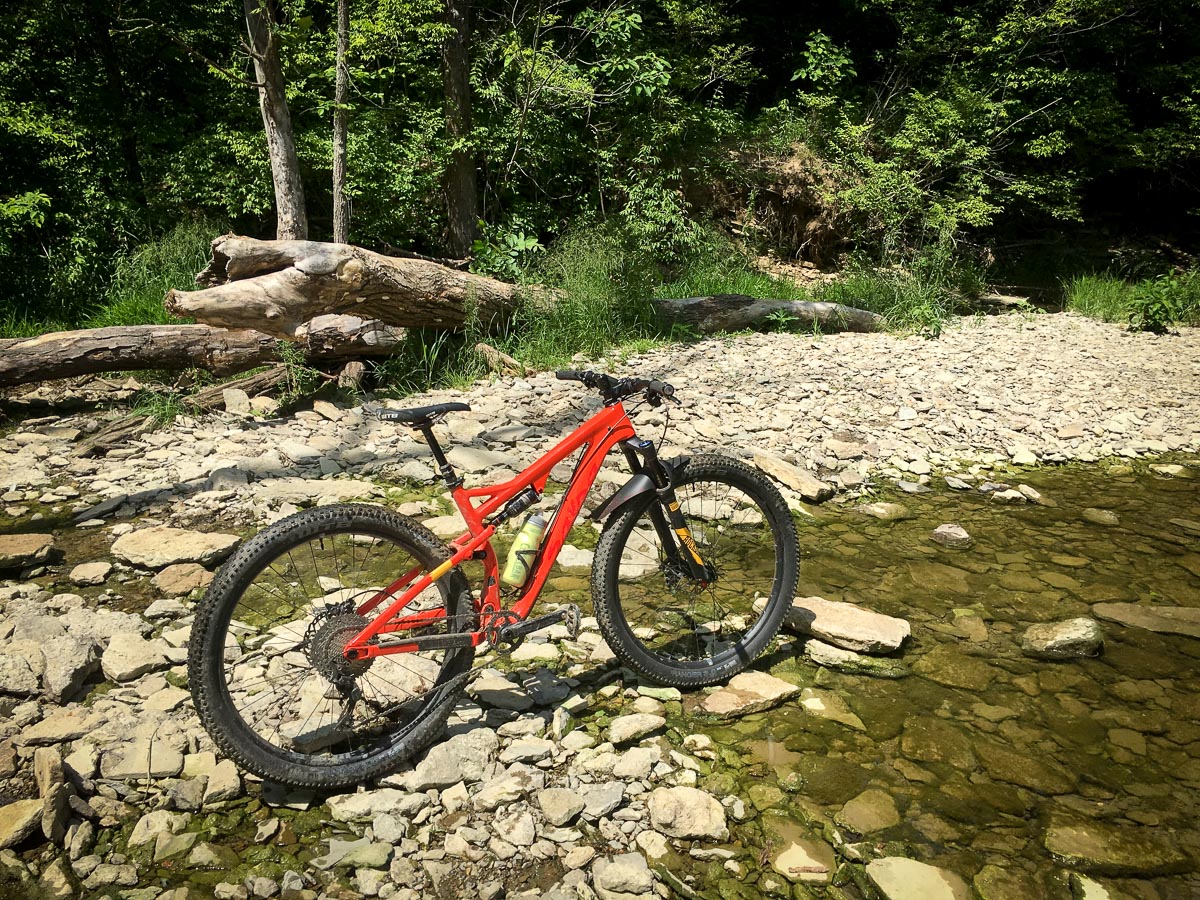Salsa Cycles has always been about exploring new ground. Literally, that translates to getting out there by bike and exploring new territory as you push yourself to new limits on another epic. Figuratively, that could represent Salsa’s willingness to create bikes that fill a small niche, that not everyone understands – like full suspension fat bikes and gravel race bikes before it was a thing.
The Deadwood Sus seems to fall squarely into that category. Salsa was not the first company to combine 29+ wheels and full suspension, but the Deadwood Sus is uniquely Salsa and is a great bike – provided you have the right mindset and terrain…
To get the complete tech breakdown, you should check out our initial posts on the Deadwood Sus, but in a nutshell, it’s a 29+ short travel full suspension rig based on the Split Pivot Spearfish/Horsetheif platform. The aluminum frame squeezes in a relatively short amount of travel with 93mm out back matched with a unique 100mm Rock Shox Pike up front.
Unlike some of the other 29+ bikes on the market, Salsa didn’t resort to chainstay trickery to try and make them remarkably short. Instead, they’re actually pretty long at 449mm. On paper, the long stays and big wheels and tires would make it seem like the bike would be hard to maneuver, but it’s surprisingly agile all things considered. Obviously, it’s not going to manual and pop like an enduro rig with 27.5” wheels, but few 29+ bikes do – even the ones with 420mm stays.
Even so, I never found it that tedious to lift the front end when needed whether for an awkward drop, or to throw in some trials skills to climb excessively technical lines. Shortening the stays a bit may help to a degree, but it’s not a deal breaker for this bike.
Over the course of the review, I found myself riding the Deadwood Sus up and down the east coast, which seems like a natural habitat for the bike. But even at home, there were very specific trails that would have me reaching for the Salsa. It wasn’t the fun enduro tracks with manicured flow trails, or even the buffed out XC loops. It was the gnarled, rooty, gritty trails that many locals often complain are too hard, too much work, and too rough. It’s on trails like these that the Deadwood Sus really shines.
Between the suspension and the 29 x 3.0” tires, Deadwood Sus devours chunder that would normally at least slow you down. This is a bike for going fast over rough terrain and pedaling through the nastiest trails – or just as likely, terrain where there is no trail.
So the Deadwood Sus is really good for a certain type of terrain, but that certainly limits the bike to a pretty specific niche. That got me thinking of ways to expand the bike’s abilities. In the launch materials, Salsa talked about the ability to run standard 29” wheels – but would that really work? You’d think going to smaller tires would result in a change in bottom bracket height, and you’d be right.
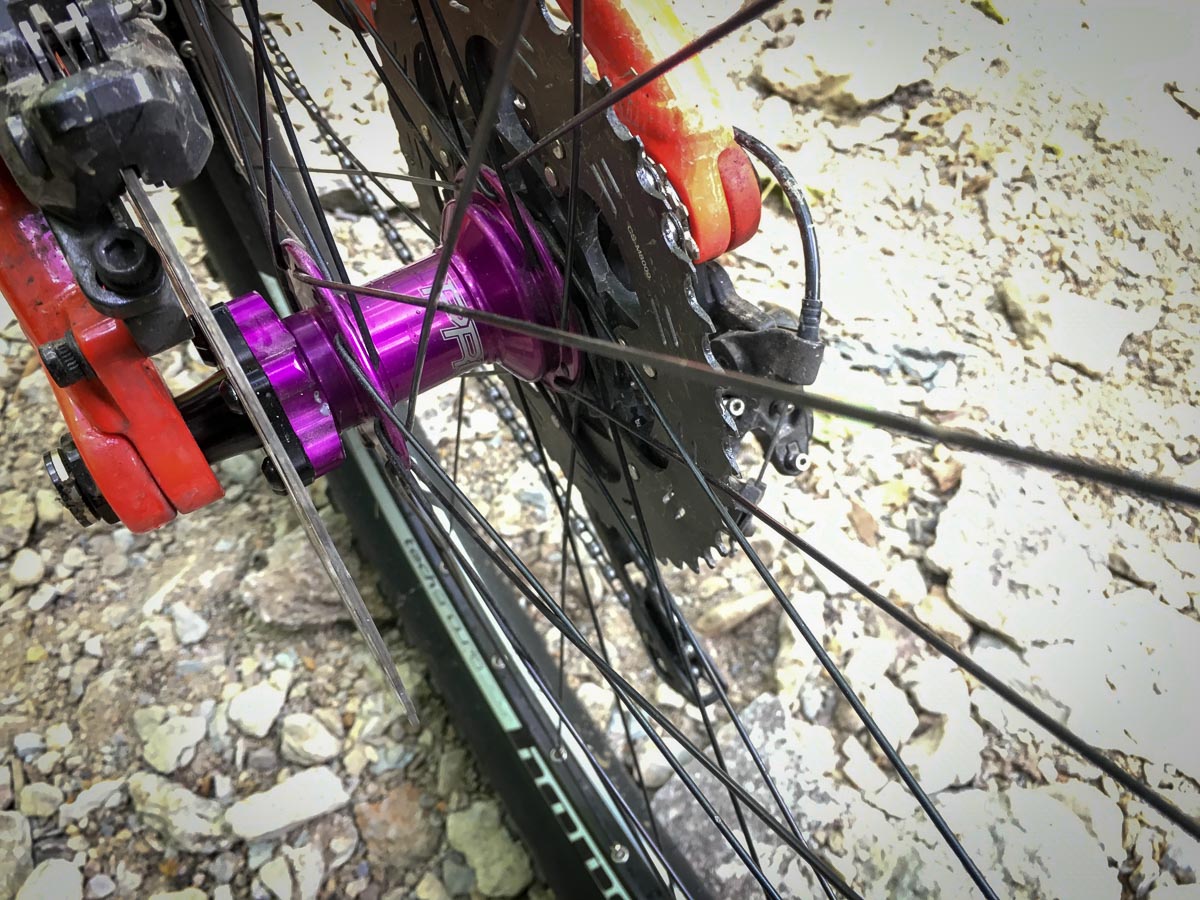
I started by measuring the stock BB height from the ground with 29 x 3.0” tires which measured 335mm. Dropping to a 29 x 2.6” Teravail Cumberland/Kennebec tire set up on Hope Enduro aluminum rims lowered the BB height to 330mm. Going further, a set of Maxxis Ardents in 29 x 2.4/2.25” lowered the BB an additional 5mm to 325mm. Knowing that, I don’t think I’d run the 2.4/2.25” combo, but the 29 x 2.6” combo seemed like a good fit.
Moving to the narrower (but still quite wide) 2.6” rubber had a noticeable effect on the bike’s handling. Direction changes were quicker with less protest. Hard cornering resulted in less tire squirm, and the bike felt lighter and more nimble. All without a noticeable change in pedal to ground clearance.
The only real issue to speak of, comes from the rear thru axle. Every once in a while, I’d notice that it was a bit loose. Nothing like the wheel was about to fall out, but it’s something to keep an eye on over time. I’d say tighten it more than you’d think you’d need to to be safe. You also might be able to find a replacement thru axle that would stay tight, if so, Salsa gives the dimensions as 12 x 188L, TP = 1.75 TL = 20.
Also, the handlebars are probably a love it or hate it kind of deal. On the XT 1×11 build shown above, the bike comes stock with 750mm Salsa Rustler bars and a 70mm stem (medium). They were easy enough to get used to, but their 11º backstop and 6º upsweep is a little odd if you’re not used to it. I actually didn’t mind them at first, but after months of riding them, then going back to normal bars on other bikes. Then, going back to the Deadwood again made me wish the bike had more normal bars and possibly a shorter stem.
In the end, the Deadwood SUS is a stout, short travel XC/Trail bike with at least two options for tire sizes that drastically change the personality of the bike. Based on how the bike handled with 29 x 2.6″ tires though, I wouldn’t mind seeing future versions speced that way which would probably allow for a little more travel out of the front end. As a plus bike alone, the Deadwood Sus is certainly a bike that applies to a small group of riders. But add in the ability to run 29 x 2.6” tires and the bike suddenly becomes far more practical for a broader spectrum of mountain bikers.
Check out our original post for more details on the bike including actual weight, geometry, and more.
